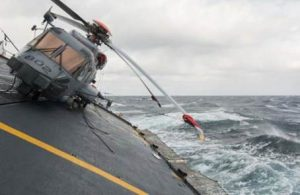zen said:
Hmmmm....This is reaching closer to my Sea Dart success thread, but.....
It's an option such a launcher is produced. Perhaps for Typhon aimed at Frigate sized ships.
However another option might be if say the UK had developed a rotary launcher for Sea Slug. Granted the actual launcher itself would need to be rebuilt, but the rotary magazine would have cells large enough to take any later weapon, and with 20ft of length to play with, that's about 3 decks.
A Typhoon sized vertically aligned launcher would probably need new fins for the Typhoon as the horizontal launchers used detachable fins. But this is not such a big problem as the advent of the VLS saw these big fins disappear from the boosted Standard, aTerrier replacement. Such a launcher could load and fire SM2 blk 4, SM3, TLAM, ASROC and Sea Lance (plus Sea Dart, Exocet and Otomat for the export market) so would be more flexible than the Mk 26.
A Mk 13 style launcher for Sea Slug is quite improbable. It could not include a checkout space unless a new room was placed between the magazine and the launcher. Also the high height and width of the Sea Slug with its wrap around boosters means the magazine ring would not support many units.
Having typed that you could make a neat launcher somewhat like a Terrier launcher orientated vertically. That is two side by side ring magazines (seperated laterally by bulkheads) each holding 8 Sea Slugs vertically. The missile is pulled from the magaine fore or aft through a door into the ready room. There it is checked out (it is aĺlready finned) and either discarded laterally or loaded vertically through the roof into the trainable launcher. Another pair or magazines could be located opposite the ready room. Providing 32 missiles in magazines, all ready to go with no assembly needed, located in five seperate spaces allowing a ship structure without large open spaces.

